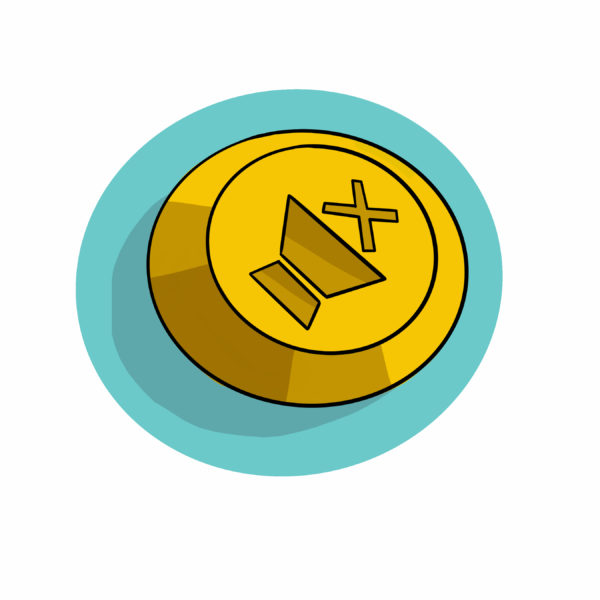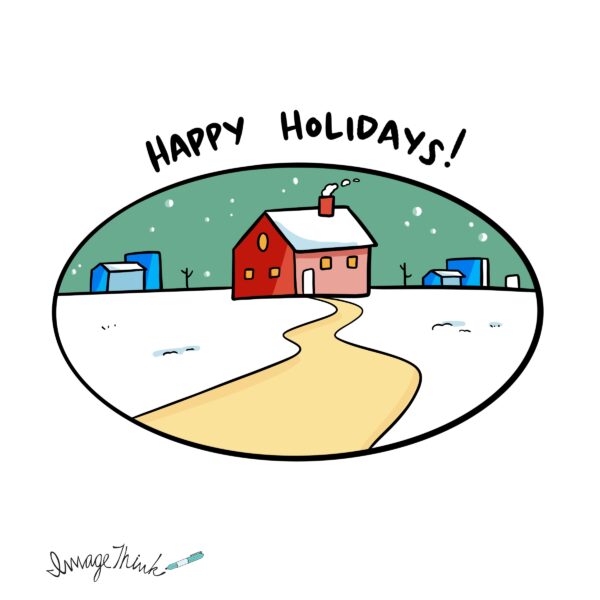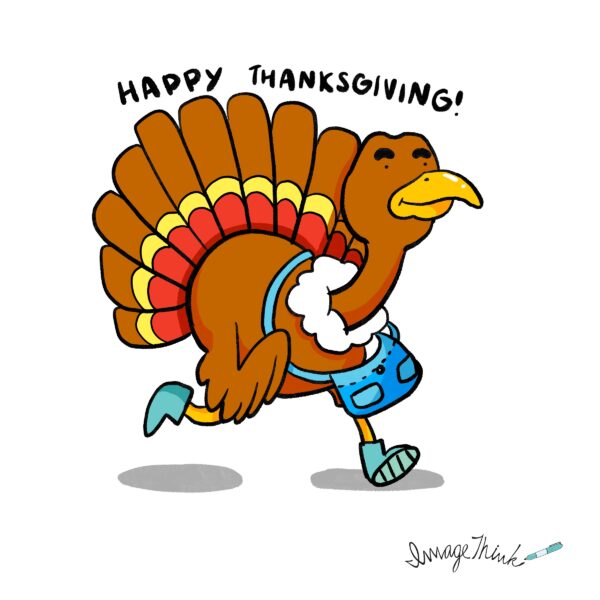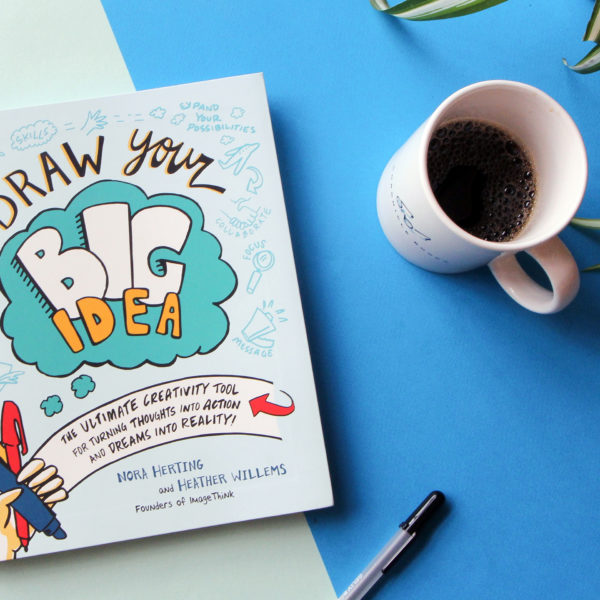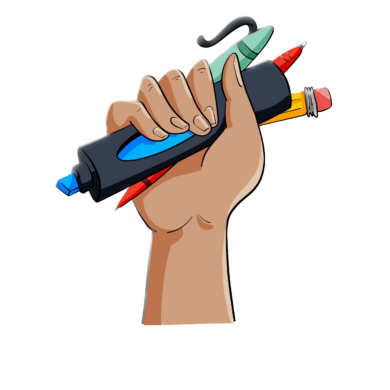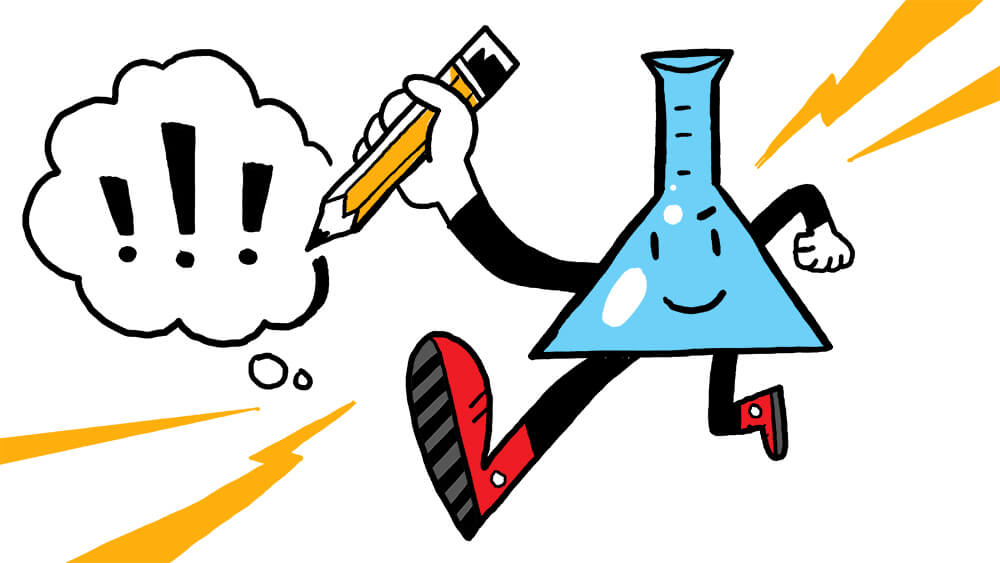
Scribing at the intersection of art and science
It probably goes without saying that graphic recording is an art. You might be a little more surprised to hear that there’s a science behind it as well. Countless studies reveal the power of visual aids for information processing and memory retention.
After all, humans are wired for visual thinking, and we’ve been doing it as long as we’ve been around. Just think about the cave paintings of Alta Mira, drawn by campfire nearly 15,000 years ago, and you’ll see just how central visual thinking is to the human experience. Or simply take a look at the first marks you made on paper; we’re willing to bet your first stab at non-verbal communication was a crayon stick-figure, not a novel.
Graphic recording makes use of the primary power of visuals, and uses it to elevate complex conversations. It keeps engagement from waning, memory from fading, and insights from dissipating. Here’s a little bit about the science behind the magic.
Visuals engage the whole brain
Out of all the senses, vision is our most developed. Recent studies show that roughly 65% of the population are visual learners, preferring to study and engage with information when tied to imagery. That means that pairing a presentation, brainstorm, or strategy session with graphic recording can increase engagement in a real proven way.
But don’t worry, we didn’t forget about the verbal or experiential learners out there. The true magic behind graphic recording lies in its ability to address the three major learning modalities by incorporating spoken word (your presentation), kinesthetic experience (watching the drawings unfold), and visuals (the images themselves) into a cohesive event.
Ready to think visually?
Images help us retain information
Mental imagery has been helping folks remember swathes of information for centuries. In ancient Rome, orators used the method of Loci—popularized as the Mind Palace by BBC’s Sherlock and the best-selling Moonwalking With Einstein—to recall long speeches and crucial data without the aid of written notes. By imagining data situated within the rooms of a house, practitioners use spatial imagination and vivid imagery to not only retain long lists of information, but to remember its order as well. Essentially, the mental images act as mnemonic triggers for information. The best part? The wackier and more vivid the images you can conjure up, the better.
Recent studies prove it, too. A recent experiment concluded that practicing the method of Loci activates the part of the brain responsible for visual cognition, helping aid in memory recollection.
We see live scribing as a direct descendant of this ancient mnemonic device. A graphic recording couches nuanced information in distinctive images that help them stick in your mind long after the conversation wraps up. The iconography not only acts as a decorative element—it can help trigger additional memories regarding participants’ own experiences of the session.
Pictures help you think—in more ways than one
Here at ImageThink, we see the ways that visuals empower abstract problem solving nearly every day. Whiteboarding and live scribing provide an anchor to challenges that would otherwise be too broad to investigate. What’s more, they can spark new thoughts, pushing the development of solutions to completely unforeseen areas.
It turns out visual thinking is even more powerful than we thought.
All too often, people separate visual thinking and more scientific modes of thought. But that false dichotomy is starting to fall away in the face of studies illustrating the link between visual processing and another mode of abstract intelligence—arithmetic and mathematics. When it comes to solving mathematical problems, neuroimaging shows several sections of the brain firing off in tandem, including two associated with visual processing. The conclusion? Tackling complex mathematical tasks is improved when numbers are connected with spatial and visual qualities like length or placement.
Want more great content from the front lines of graphic facilitation? Follow us on Twitter for blog updates, workshop info, and more.
